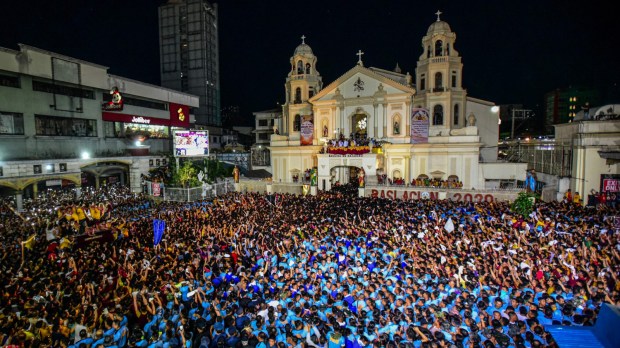The Philippines has once again canceled the annual “Black Nazarene” procession due to a surge in coronavirus infections, reported UCANews.
About three million people million people usually gather in Manila on January 9 for the Feast of the Black Nazarene, a 16th-century black, wooden statue depicting Jesus on his way to the Crucifixion.
On January 5 the government’s health department reported 10,775 new cases of COVID-19, almost twice the 5,434 cases reported on January 4.
Philippine President Duterte on January 5 announced a ban on large gatherings.
“Now we are seeing an upward trend of the virus. Omicron infects faster. We need to address this by not allowing the public to come together for gatherings, including public Masses and the traditional procession of the revered image of the Black Nazarene,” Duterte said.
“There are millions of devotees there and you cannot just be complacent about the transmission of the disease. I hope the Church can understand that all gatherings are not allowed,” he said.
History of the “Black Nazarene”
The “Black Nazarene” statue was carved by an anonymous Mexican sculptor in the 16th century, and taken to the Philippines in 1606 by a group of missionaries. Pope Innocent X approved its veneration in 1650 and authorized the establishment of the Confraternity of the Most Holy Jesus Nazarene.
The statue is enshrined in the Quiapo Church in the Archdiocese of Manila, and has survived fires that destroyed the church twice, two earthquakes and numerous typhoons, and bombings during World War II. Many miracles have been attributed to the statue.
Procession is a way of deepening one’s faith
The procession is called the “Traslacion,” and refers to the transfer of the Image of the Black Nazarene.
The last time the procession was held was in 2021. At the time Msgr. Jose Clemente Ignacio, the rector of the Minor Basilica of the Black Nazarene, told CNA that the procession is a way for Catholics in the Philippines to deepen their faith.
“In a way it is imitating the Calvary experience: the sacrifice and suffering that our Lord endured for our salvation like when Jesus was walking barefoot, carrying the cross to Mount Calvary,” he said.
“The devotees also want to give back to God by participating in the suffering of our Lord and entering into the Paschal mystery of Christ,” said Msgr. Ignacio.
Watch this video of the 2020 procession from Rappler.com:

